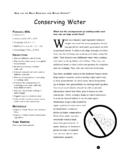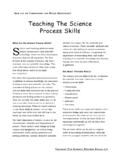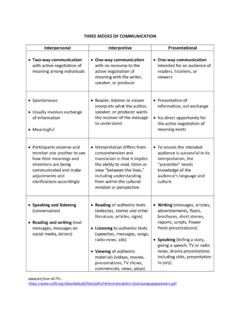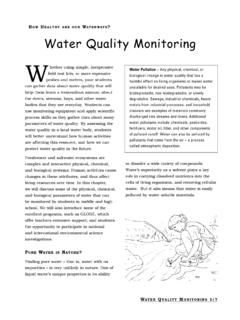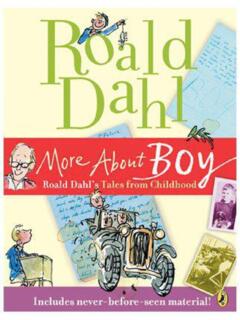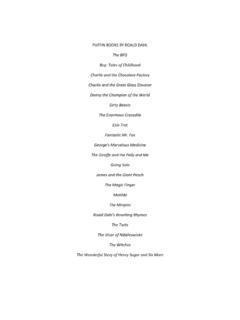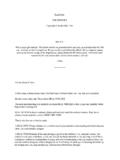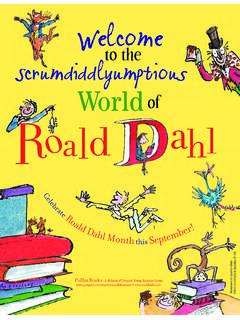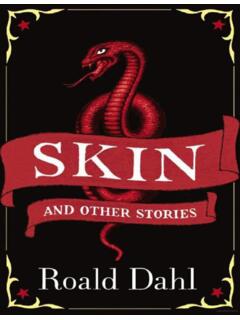Transcription of Women Behaving Badly: Dahl's Witches Meet the Women of …
1 Children's Literature in Education, Vol. 29, No. 3, 1998 Anne-Marie Birdcompleted a degree inLiterature in 1997. Sheis now studying for aMaster of Arts degree inModern Literary Studiesat Boston Institute ofHigher Education innorthwest BirdWomen Behaving Badly: Dahl's Witches Meet the Womenof the EightiesDavid Rees, " dahl 'sChickens: roald Danl,'pp. 143-155 Michele Landsberg,World of Children'sBooks: A Guide toChoosing the Best,p. 89 Catherine Itzin,"Bewitching the Boys,'p. 13 Kramer and Sprenger,Malleus Maleficarumin Barstow, Witchcraze,passimMuch of the criticism leveled at roald Dahl's The Witches (1983) fo-cuses on his alleged misogyny (Rees, 1988; Landsberg, 1988); perhapsthe most powerful reaction comes from Catherine Itzin (1985), whoclaims that Dahl's text bearsa striking similarity to Kramer and Sprenger's misogynistic text, MalleusMaleflcarum.
2 Both texts, although separated by over 400 years,match the anxiety of the authors to reassure themselves that Women ,not men, could be Witches .. The Witches is a dangerous publication.. [it] re-enforces culturally conditioned , Itzin's criticism would seem more appropriate to NicolasRoeg's 1989 film adaptation, The Witches , which might seem more inline with traditional criticisms of Witches , especially those outlined inthe 1486 witch hunter's manual, Malleus Maleficarum, mentioned byItzin:All witchcraft comes from carnal lust, which is in Women insatiable.
3 What else is a woman but a foe to friendship, a necessary evil, a naturaltemptation.. And what, then is to be thought of those Witches whoin this way sometimes collect male organs in great numbers?Before investigating the issue of misogyny in Dahl's book and Roeg'sfilm, it will be useful to look at some of the more general differencesbetween both texts. Roeg's film is based upon Dahl's basic narrative:A child is orphaned, taken by his grandmother to a seaside hotel,where he encounters a coven of Witches , is transformed into a mouse,and finally, after defeating these Witches , returns home with his grand-1190045-6713/98/0900-0119$ 1998 Human Sciences Press, 's Literature in Educationmother.
4 Yet, while the film generally preserves much of Dahl's narra-tive, at times it radically reworks it with such interpolations as thecomic subplot featuring the hotel manager's affair with the chamber-maid, the Grand High Witch's cat, the chase scene involving a Po-temkin-like runaway pram, and the invention of a new character, MissIrvine (the "good" witch). The most explicit difference is in the end-ing of the film. In Dahl's text, the child narrator (whose experiencesare the most important) is permitted to remain a mouse; a necessaryact of wish fulfillment resolving what is arguably the greatest of child-hood fears namely, separation anxiety (a mouse's shorter life spanbeing compatible with that of the narrator's aged, beloved Grand-mamma):I'll be a very old mouse and you'll be a very old grandmother and soonafter that we'll both die together.
5 (p. 196)In the film, Luke (the equivalent of Dahl's nameless child narrator) ischanged back into a boy, and is thus destined, in the not-too-distantfuture, to find himself bereaved all over again. This suggests thatLuke's story, or more specifically its resolution, is not the major con-cern of the film. What must now be explored in more detail is thesignificance of the witch in the book and to what extent Roeg's filmuses the implied connection between evil and as Witch: Dahl's Location of EvilThe Grand High Witch in Dahl's text is relatively asexual.
6 Dahl's descrip-tion of her is couched in conventional "feminine," diminutive terms:"tiny .. very pretty" (p. 65), and while the description of her withouther mask is extremely horrifying "foul and putrid and decayed .. the skin all cankered and worm eaten" (p. 66) the horror issomewhat mitigated by Blake's illustrations and Dahl's humor (espe-cially the illustration of her kicking the child's pet mice: "She wouldhave made a great football player" p. 91). The book therefore conveyssome sense of duality (however slight) in that Dahl's Grand High Witchhas connotations of "prettiness" and diminutiveness with the mask on,and abject horror after it is removed, whereas Roeg's Grand High Witchis a vision of uncompromising evil in both Dahl's text could be interpreted as misogynistic on a lessexplicit level as there are references that link the Grand High Witchwith the Devil: "Nobody has ever seen the Devil.
7 But we know heexists" (p. 41), and with the serpent (the Devil in disguise). The asso-ciation of witch and serpent creates a powerful duo of diabolism withconnotations of Eve, temptation, seduction, and the fall of , the second child taken by Witches , was, according to Grand-mamma, tempted by "a nice lady" who had given her an apple ( Behaving Badly18). But far more explicit is the witch's approach to the child playingin his tree house: "I have a present for you" (p. 43), says the witch asshe endeavors to tempt the child down from the tree (of innocence?)
8 With the offer of a "small green snake" (p. 44). The association withserpents is again evident in the description of the Grand High Witchwith her "look of serpents" and "brilliant snake's eyes" (pp. 66-68).However, female sexuality is not introduced as a weapon or threat inDahl's text; or, at least, not as overtly as in many other fairytales. And,while dahl asserts that "all Witches are Women ," he goes on to statethat "a ghoul is always a male. So indeed is a barghest" (p. 9). Dahlclarifies this later: " Witches are not actually Women at all .. they aretotally different animals" (p.)
9 30). So, what must be emphasized is that,in Dahl's text, the child narrator's story is central; his relative pow-erlessness against the potential or actual threat issuing from the worldof conspiratorial and "all-powerful" (p. 39) adults. Dahl's text exposesthis unequal balance in power between the child, whose transforma-tion into a mouse makes him a more identifiable symbol of the smalland the weak, and the adult, who, in the guise of the witch (with hersupernatural powers), becomes a much more potent symbol of adultpower. The issue of female subjectivity is not raised in Dahl's text; evilis not gender specific but is located within the "all-powerful" threat-ening adult "Roeg" Reworking of Dahl's WitchesThe screen narrative is also constructed upon the premise that powerand evil are synonymous; however, this premise is manipulated todifferent ends.
10 Roeg's film does include an examination of the powerrelationship between the child and the adult, similar to that found inDahl's text, but is, to a much larger degree, an exploration of a verydifferent type of power relationship. Ostensibly centred around Luke,the fairytale narrative of the film has a crucial function: It is a conveni-ent, or more accurately, an acceptable framework upon which tohang another narrative one that does not prioritize the experiencesand fears of childhood but the fantasies and fears of looking at Roeg's depiction of the witch in detail, it will beuseful to remind ourselves how Women are conventionally repre-sented in the movies, regardless of genre: They are almost alwaysdefined in terms of their sexuality.
